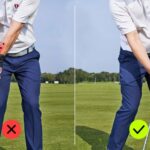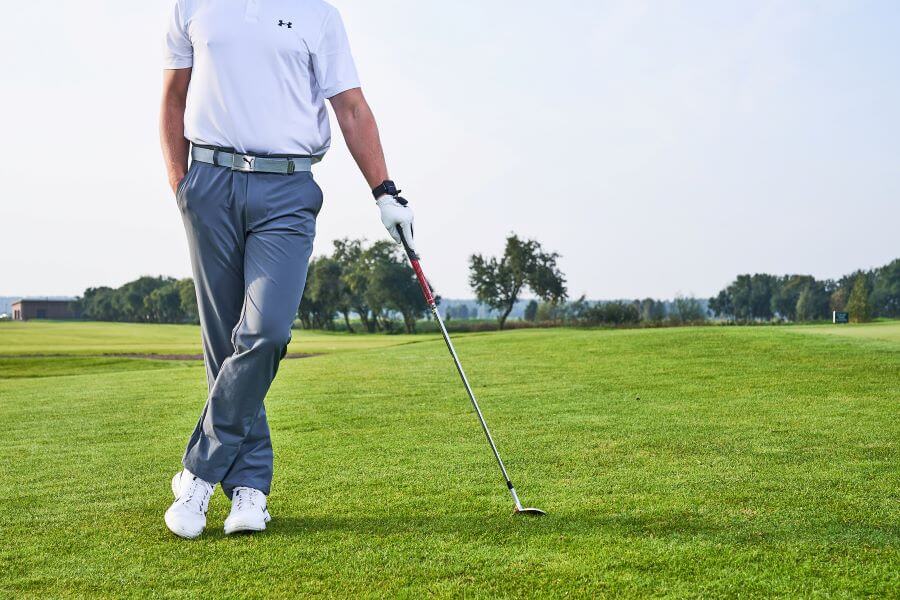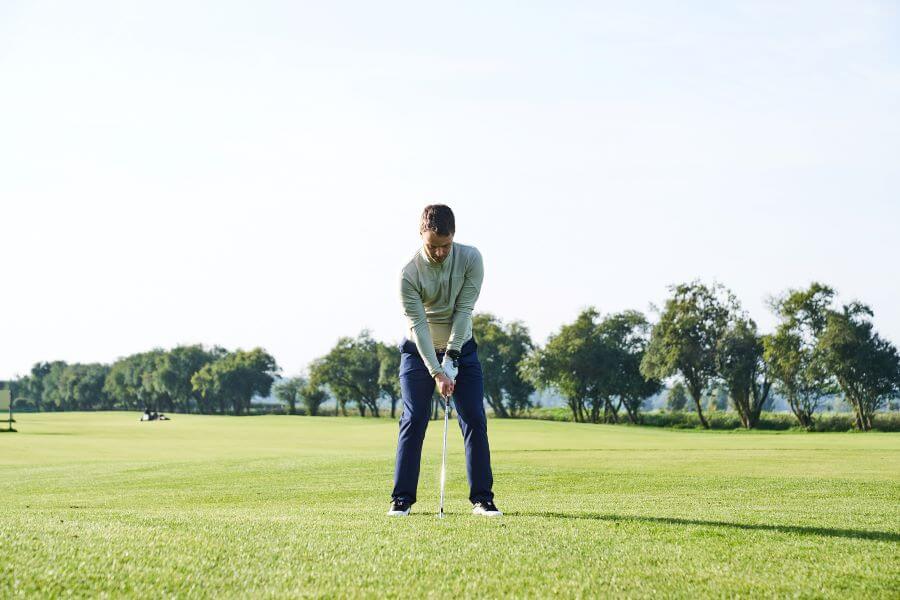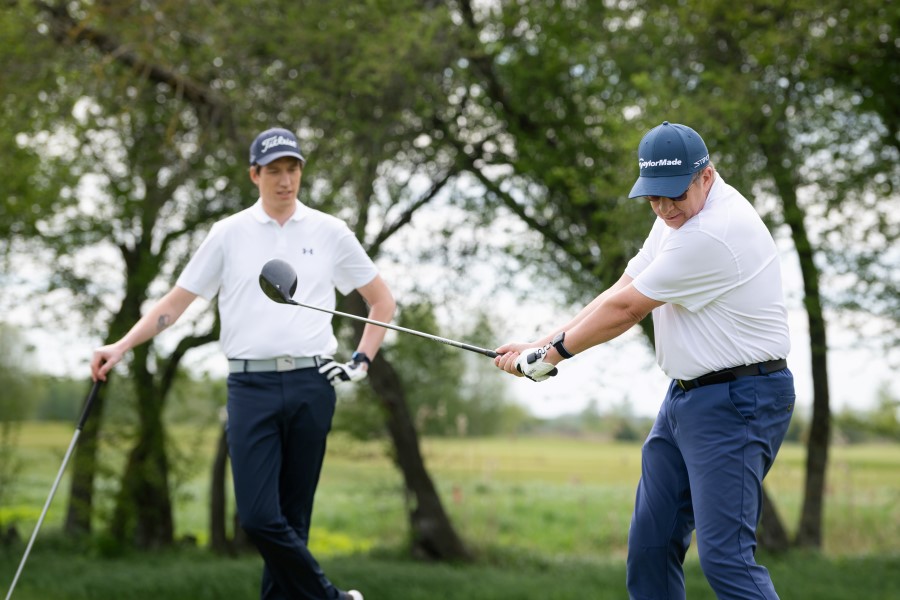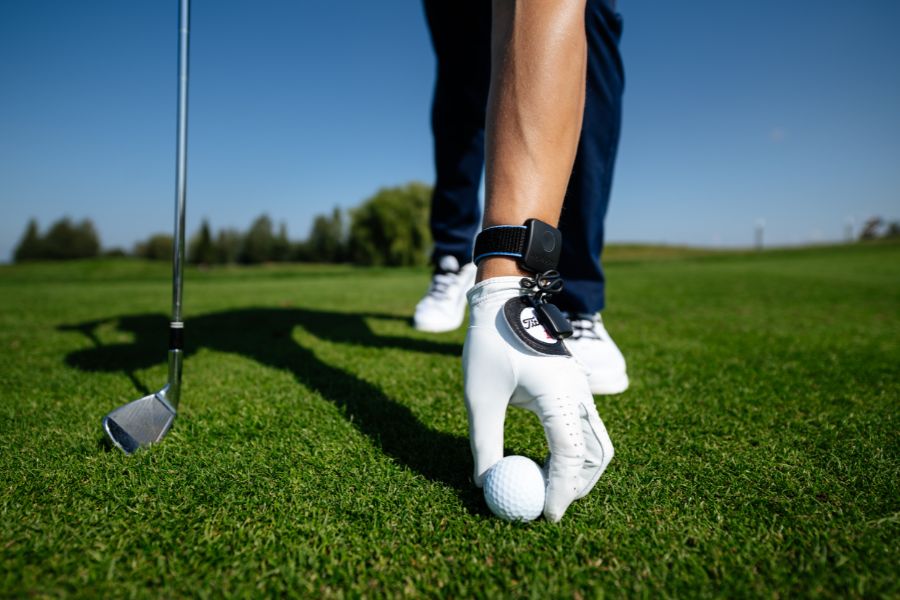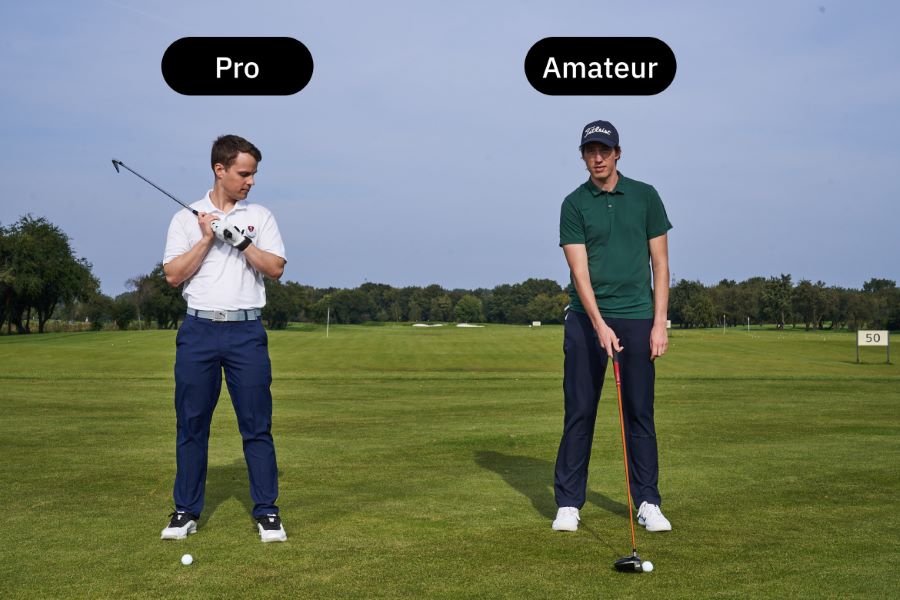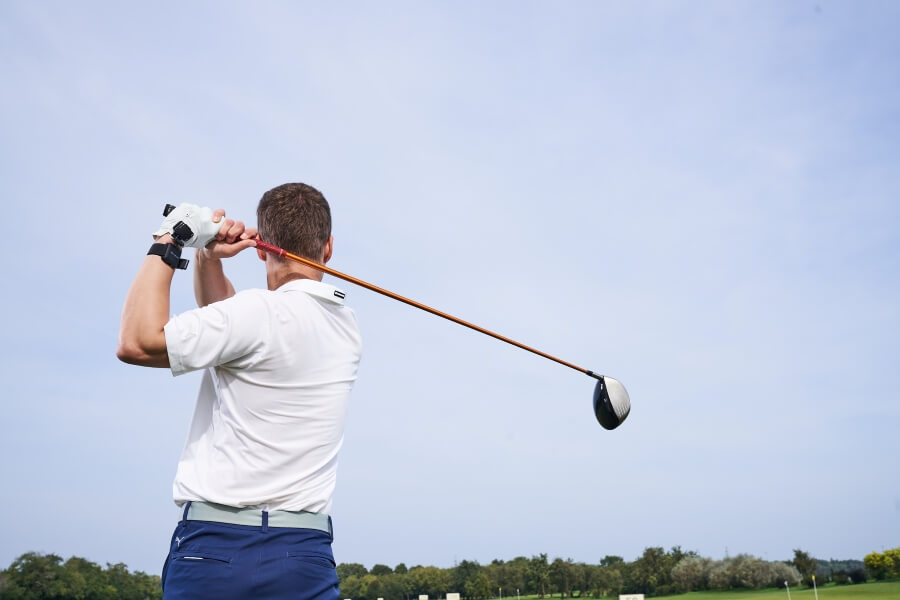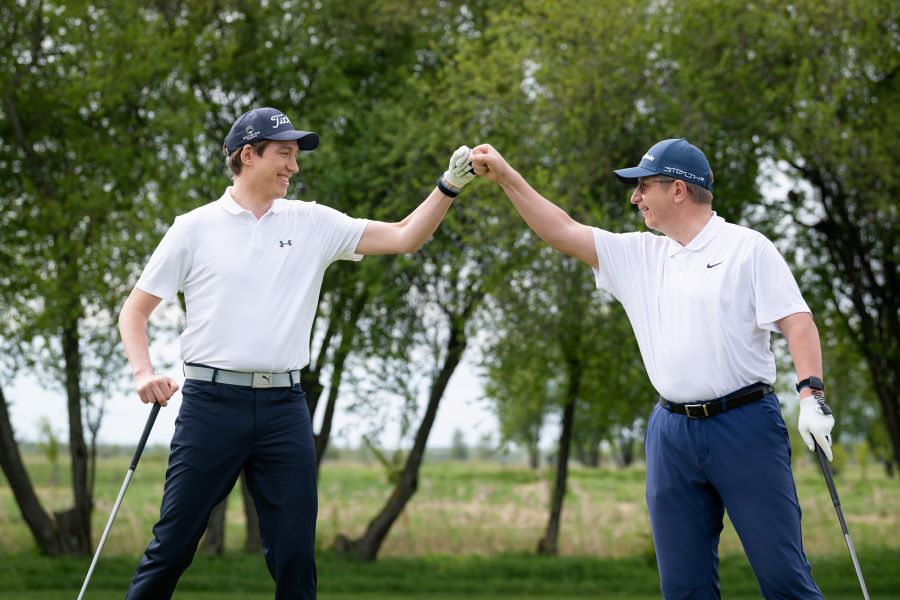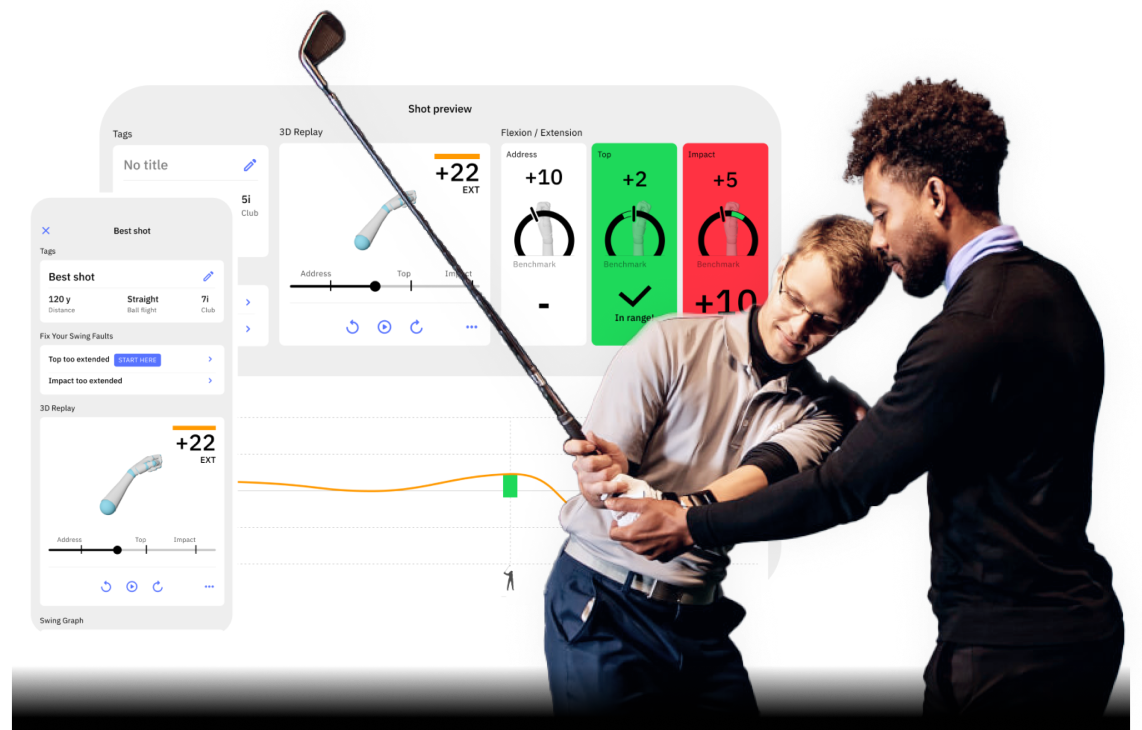Shaft Lean at Address: How Much You Need + Drills to Train It
Having your hands slightly ahead of the clubface at address is a good position; it sets you up for better compression and a more consistent strike. But many golfers overdo it.
Too much shaft lean can deloft the club, open the face, and lead to inconsistent contact. Often, the issue isn’t just hand position, it’s the wrist angles behind it.
In this guide, we’ll show you how much shaft lean you actually need at address, why it matters, and how to avoid common mistakes. You’ll also get a few simple drills to help groove the right feel.
Shaft Lean at Address (Key Takeaways)
If you don’t have time to work on your shaft lean at address right now, here are the most important things to take with you right now:
- A small amount of forward shaft lean at address sets up better compression and more consistent ball striking.
- Just pushing your hands forward isn’t enough; your lead wrist needs to be flat or slightly bowed (flexed) to keep the clubface square.
- Check your grip: A neutral to slightly strong grip helps you maintain better wrist angles throughout the swing.
- Wearing HackMotion gives you real-time feedback on your wrist position at address, helping you build a repeatable and effective setup.
Contents
What’s the Importance of Shaft Lean at Address?
Before we get into how to achieve the right amount of shaft lean at address, you may want to know why this is important.
Having the correct amount of shaft lean at address:
- Improves ball striking by promoting a downward strike.
- Promotes compression.
- Controls the clubface and keeps it square through impact.
- Increases distance by ensuring efficient energy transfer.
- Enhances consistency by reducing mishits and promoting proper alignment and impact position.
Certainly, there are enough reasons to consider how much shaft lean you have at the address and whether or not it’s enough.
How to Get the Right Amount of Shaft Lean at Address
You’ll want to focus on proper grip, correct wrist angles, and the right stance to get the right amount of shaft lean at address.
Proper Grip
To get the shaft lean at address, you’ll want a grip that is a bit closer to strong than it is weak. Ensure that the V of the thumb and index finger are pointing towards the right shoulder.
When your hands are a little weak on the club, the forward shaft lean at address feels awkward and can open the clubface in your setup. Neutral to strong is the way to go.
Pay Attention to the Wrist Angles
After studying well over 1,000,000 golf swings, one thing that we have seen a lot of is inconsistency in the wrist position of golfers at setup.
Players tend to grip the club differently almost every time without realizing it.
While wearing the HackMotion, you can look at something like wrist extension or flexion in the lead wrist to get information about your consistency and the shaft lean you have at address.
The lead wrist should bow a bit (flex) as you are adding this shaft lean.
This will help promote the forward shaft lean without changing the angle of the clubface and opening it.
Hand Position
Your hands should be slightly ahead of the ball at address, with the shaft pointing toward your lead hip. This subtle forward lean helps promote a downward strike without excessively delofting the club.
If you push your hands too far forward past your lead thigh, you’re more likely to turn your swing into a slap shot, leading to thin or inconsistent strikes.
You can experiment a bit to find what feels most natural. Start with your hands just ahead of the ball, then try nudging them slightly forward to see which setup promotes the best contact without losing loft or opening the clubface.
Get the Ball Position Right
If your ball position is too far forward or back in your stance, it will offset the positive benefits of your forward shaft lean at address. Additionally, it may hinder you from getting into the correct position.
For your mid irons, play the ball in the center of your stance. As you move to the short irons, you can put the ball just slightly back, and for the long irons, just slightly forward.
If you have any exaggeration in these, expect some inconsistent golf shots.
Take Some Picture and Video
Finally, take some pictures and videos of your shaft lean at address. Ensure that it is not too far forward and that you are still maintaining sufficient shaft lean.
Also, wear your HackMotion as you practice to check the consistency of your wrist position.
Drills to Work on Shaft Lean at Address
Here are a few great drills to help you work on shaft lean at address. You will just have to practice and monitor it to get it right.
Flexion Hold Drill
This drill helps you train the feeling of lead wrist flexion at impact, the key to delivering shaft lean without opening the clubface.
By exaggerating wrist flexion and shortening the follow-through, you’ll learn to control the face and compress the ball more consistently.
Flexion Hold Drill – Step by Step
- Set Up: Take your normal address position and wear HackMotion to track wrist flexion.
- Short Swing Only: Make a half swing, stopping just after impact.
- Flex and Hold: Focus on holding lead wrist flexion (bowed position) as you swing through the ball.
- Face Control: Your clubface should stay square or slightly closed to the arc — check HackMotion data to confirm your flexion number (ideally 10–15° at impact).
- Repeat for Feel: Do 10–15 slow reps holding that flexed position past impact before returning to full swings.
Twist to Square Drill
Many golfers attempt to achieve shaft lean by simply pushing their hands forward, but this opens the face.
This drill teaches you how to twist the shaft (via lead wrist flexion) to square the face as you lean the shaft forward.
Twist to Square Drill – Step by Step
- Set Up: Address the ball with a mid-iron.
- Forward Press + Flex: Push your hands slightly forward, but simultaneously bow your lead wrist to keep the face square.
- Slow Motion Reps: Rehearse this in slow motion — forward handle press + lead wrist flexion (watch the face stay neutral).
- Check with HackMotion: Monitor for extension — your lead wrist should be flat or flexed, not cupped.
- Swing and Hold: Make slow swings, stopping at impact to feel how the shaft lean and square face work together.
Checkpoint Drill (P6 Wrist Check)
This drill targets the transition, where many golfers lose control of wrist angles.
It trains you to maintain lead wrist flexion throughout the downswing, allowing shaft lean to develop naturally with a functional clubface.
Master Wrist Flexion in the Downswing
Focus on continuously adding flexion until the club reaches parallel, then smoothly complete your swing.
Checkpoint Drill (P6 Wrist Check) – Step by Step
- Set Up: Take a full backswing and pause at the top.
- Transition Slowly: Begin your downswing slowly and stop when the club is parallel to the ground (P6).
- Check Face Angle: The clubface should be angled slightly down not pointing at the sky.
- Wrist Position: Use HackMotion to confirm your lead wrist is flexed (not extended).
- Repeat & Swing: Rehearse the movement and then make smooth half swings using the same transition feel.
Final Thoughts
Now you should have a better understanding of how professionals consistently strike the ball so well. A lot of it has to do with getting set the right way for each and every swing.
Use your HackMotion to measure your setup, make sure it’s accurate, and then learn to repeat it. Shaft lean at address is a must; just remember to keep it within reason.



